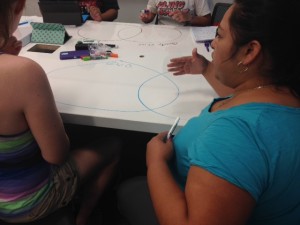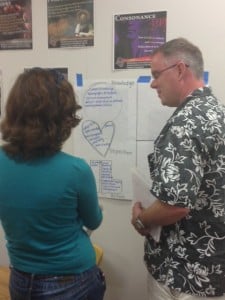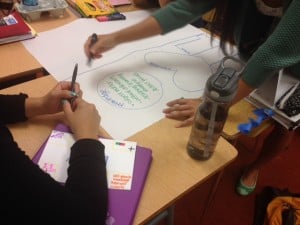Day 30: What would you do (as a teacher) if you weren’t afraid?
As a teacher of teachers, I get the immense privilege of helping students face their fears and honor their professional identities. Watching most of them go into the classroom and make the difference that they will make with their students drives my work and is at the center of my heart.
But, what I would do as a teacher if I wasn’t afraid would be to counsel a few of my teacher candidates out of the profession.
NOT EVERYONE SHOULD BE A TEACHER. Sometimes not even if you really want to be.
I know that there are some people that are very natural teachers with a strong innate understanding for how to make curriculum comprehensible and engaging for students and an openness to learn and improve. Most candidates however aren’t necessarily “born teachers” nor do they need to be–that’s why we have colleges of education–to help students develop pedagogical skills, pedagogical content knowledge, content knowledge (I mean, honestly, even “born teachers” need strong pedagogical training and professional development). But, what we can’t teach in schools of education are dispositions necessary to be a teacher: flexibility yet consistency, authenticity, a strong sense of self-identity, an ability to work with diverse groups of learners. We can give information on these things, emphasize their importance but we can’t change who people are. And, sometimes, as sweet and wonderful as candidates are, this is not the right profession for them.
Don’t get me wrong, when I see a candidate that raises concerns (and there aren’t so many of them, even within a large program), I do talk to my program director and hope that he will speak to them and counsel them out (it’s not really my position), but it’s not within me to be a dream-killer. I really struggle with this pull to support these candidates’ development, but also to do what is ultimately right for both the candidate and their potential future students.
I know this thought isn’t a positive way to end this 30-day blogging challenge. And so, I won’t end it this way. Instead I’ll end by saying that the other thing I would do if I wasn’t afraid, afraid of being judged or not good enough, afraid of not having enough to say–is to continue blogging daily. This challenge has shown me that in spite of vacation, heavy workloads, a reappointment file & service commitments, I can make time for writing daily. And, it doesn’t have to be great or deep; it can be honest and raw. It is a great thing to see my thoughts over the last 30-days and to have taken the time for reflection each day. I’d love to continue being a reflective teacher today, tomorrow and throughout my career.




